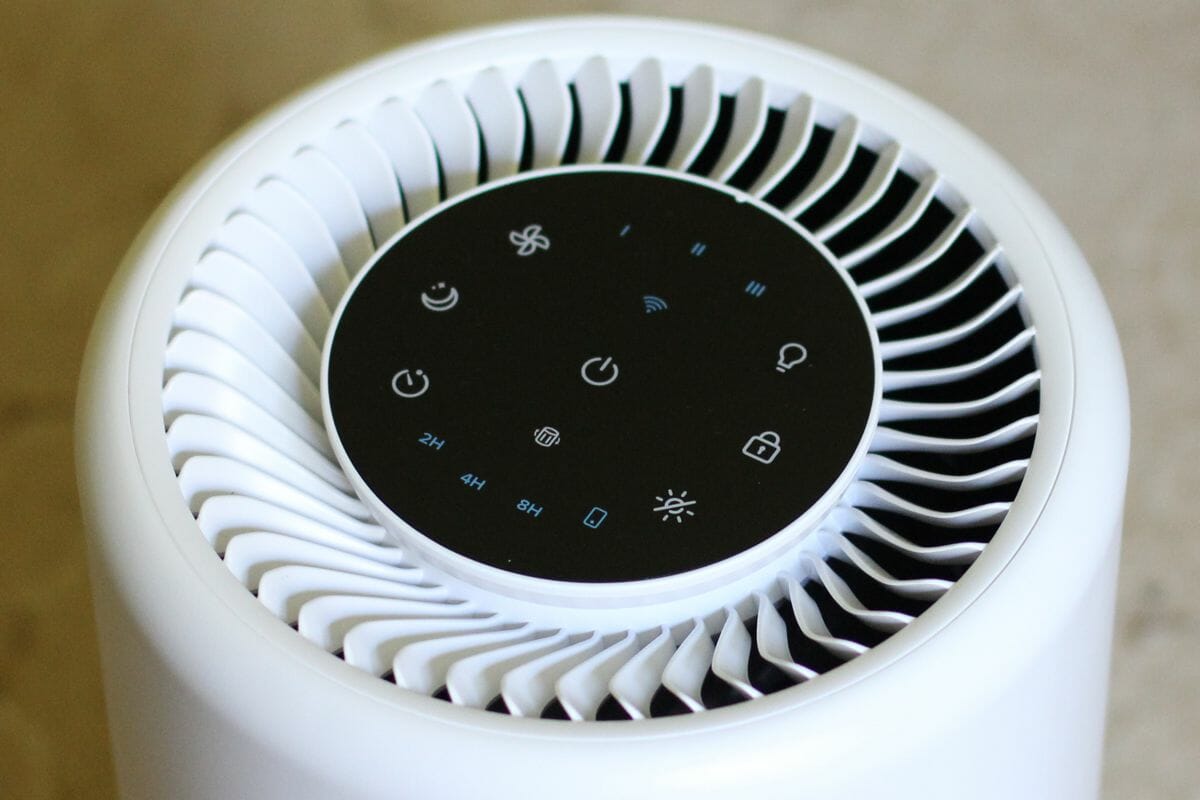The room air that we breathe is not always as clean as we would like both at home and at work. Air purifiers are now very effective in reducing the particle count and chemicals in the air. They also really affordable, with reliable models starting at $80.
On the whole, the best small room air purifier is the Coway 400S. This has a true HEPA filter and a carbon filter. It processes more air per decibel of noise than any other air purifier under 50db. Due to sitting nearer the air purifier in a small room, the air purifier needs to be quiet.
However, the smaller the room the bigger the air purifier you need! The inescapable logic that dictates this is outlined below.
So why bother with an air purifier for a small room or any room?
If we know what we are trying to achieve and why we will understand if it is important and which aspects of the air purifiers function are most important.
The reason for wanting to use an air purifier at all is on health grounds. There really is excellent evidence now linking airborne particles to suboptimal health outcomes. For instance, there are now several papers in excellent scientific journals showing that, going from the particle count that air purifiers can produce in indoor air up to the top of the safe range of particle count specified by the EPA mortality, almost doubles!
Although it is not well known, the studies of the impact of fine airborne particles, PM 2.5, on human health are looking more and more serious. For instance, heart attacks and strokes, are seen at even low levels within the EPA safe range. A similar finding of increasing risk of dying with fine particle exposure even at low levels was found in a study of 652 cities. These findings were published in the world’s top cardiac journal Circulation and top medical journal The New England Journal of Medicine.
There has since been additional studies showing the increase in mortality at low PM2.5 airborne particle counts.
A study from Europe, also showing increased mortality at airborne particle counts under the EPA’s limit.
A study from Harvard looked at the effect of low levels of air pollution, PM 2.5 less than 12 µg/m3 on mortality. All patients aged at least 65 years enrolled in Medicare from 2000 to the end of 2016 were studied, so more than 50 million people. It was found even within this of range particle concentrations, considered to be safe, that annual mortality increased 0.073% for each 1 mcg/m³ increase in PM 2.5. So a decrease in PM 2.5 particle count of 10ug/m3 would reduce absolute mortality by 0.73% which for this population represents a percentage mortality reduction of approximately 14%. This is easily achievable with an air purifier.
For those over 85 years old the risk was approximately 7 times as great as for those between 64 and 75 years old. So this study also showed that the elderly are a vulnerable group, and so have more to gain from airborne particle reduction with an air purifier.
A recent study from Canada, which looked at changes in long-term residential exposure to particulate matter PM 2.5 and found when people move from one area of the country to another which had a different pollution level. The people who moved from a high pollution area to a low pollution area went from an average PM 2.5 level 10.6 mcg/m³ to 5 mcg/m³. The people that went from a low pollution area to a high pollution area increased their PM 2.5 from 4.6 mcg/m³ to 9.2 mcg/m³. Over 5 years those people who moved from high to low levels of PM 2.5 pollution had a 6.8% reduction in mortality, mainly from cardiovascular causes and diabetes. Conversely those people who moved from a low to higher-level pollution had an increase in mortality, particularly from respiratory disease.
So here we have a study which directly suggests that lowering PM 2.5 levels in humans leads to lower mortality.
The World Health Organization has now lowered the safe limit for PM 2.5 fine airborne particles to 5 mcg/m³.
According to EPA statistics, covering 200 million people in the US, 98% of US citizens are living in areas with PM 2.5 concentrations above the new WHO guidelines. These statistics are flattering to outdoor air particle count as they were collected during the COVID epidemic, when activity both industrial and vehicular was reduced, so the real picture with a fully functioning economy may be even worse. In addition the situation is actually worse than these outdoor measurements, as indoor air pollution is often worse than outdoor air pollution, for instance when we cook or even make toast particle count in our homes increases dramatically above the background level. Moreover, even these WHO guidelines seem to be aiming for particle count that is higher than those leading to the lowest mortality rates, please see the graph below-
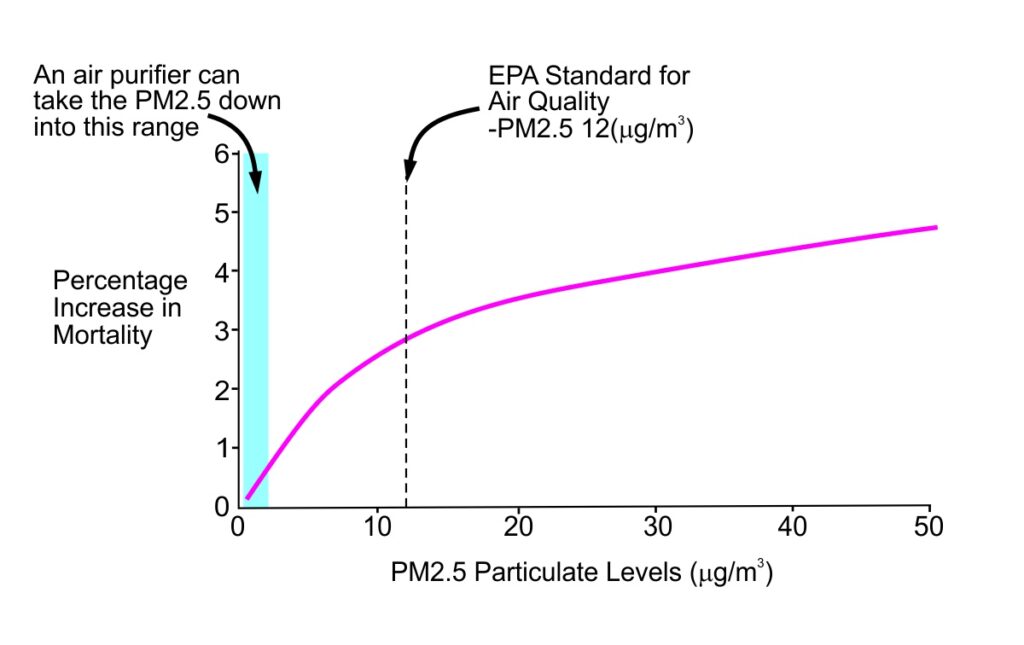
This is based on data from the first 2 studies referenced above.
The percentage reduction in mortality from using an air purifier may seem to be small. However-
- This is an average and particularly vulnerable adults may have more to gain. The Harvard study mentioned above only considered people older than 64 who were medicare enrolees and found an effect that was double that in the graph above.
- Also death is obviously an enormously significant endpoint, but there are a whole range of disease and disability short of actual death that is caused by airborne particles.
- Even using the EPA’s air quality standard of 12 ug/m3, about a million years of American’s lives are lost each year due to air pollution so the scale of the problem is huge. If we now consider anything above 5 ug/m3 as abnormal the problem is many fold greater as so many more people are affected by being considered to live in a polluted area and the potential increase in numbers dying considered to be due to air pollution will be much greater.
So if we choose to use air purifiers to alter our airborne particle count, and if we use them properly we should be able to reduce the particle count to under 1 mcg/m3. The graph shows that the lower the PM 2.5 particle count the greater the reduction in mortality per unit of PM2.5 reduction.
However, the really important observation is that these effects are apparent at levels of particles in the air that we think of as “normal”, well below the limits at which “pollution” starts. So we may need to change our attitudes away from only those in polluted areas needing air purifiers, towards the possiblility of everyone potentially benefiting from breathing purified air for at least part of their day.
So it really is important to improve our indoor air quality and we are looking principally to reduce particle count.
What Criteria Do We Need for Our Air Purifier for a Small Room?
In choosing the best small room air purifier there are some basic specifications-
1) HEPA filtration
To provide excellent filtration of airborne particles, you should buy a HEPA air purifier, with a true HEPA filter, avoid those with “HEPA like” or “HEPA style”…. filters. HEPA filtration easily removes airborne particles with a very high efficiency. This efficiency is measured at 0.3um and to be certified as HEPA specification, the filter must remove 99.97% of the particles. However, this specification does not cover particles less than 0.1um, “ultrafine particles”.
Studies have also shown ultrafine particles can penetrate into the deepest areas of our lungs and then can enter our blood stream. So that when you breathe in ultrafine particles within 12-30 minutes, they appear in your bloodstream. These particles are found in normal indoor air, about 2 million particles per cubic liter, but at much higher concentrations during cooking. They have also been found in human brains and are thought to have serious health effects particularly provoking heart attacks. A few filters are also specified to deal with ultrafine particles. For additional information about ultrafine particles please see this article-“Airborne Ultrafine Particles-do they accelerate aging?”
A HEPA air filter will filter out (in order of descending size)-
- House dust mite
- Pet dander
- Pollen
- Mold Spores
- Airborne allergen
- Dust-household and atmospheric
- Bacteria
- Viruses
- Brake dust
- Tire dust
- Vehicle exhaust particles
- Smoke particles from both cigarette smoke and wildfire smoke
2) Activated Carbon filter
The air purifier should also have a carbon filter, as a HEPA filter cannot catch gaseous pollutants. This is because the molecules are too small to be trapped by the filter. The activated carbon removes airborne chemicals, these include volatile organic compounds, which cause odors. So this filter is sometimes referred to as the “odor filter” and can be especially helpful for reducing household odors such as pet odor.
For additional information, please see this article on how air purifiers work.
Of course, filter replacement will be necessary and the expense of this can be very different from one air purifier to another. Once the old filter is thrown out, the particles or chemicals stuck to it are removed from the home forever.
UV light is not essential in an air purifier and indeed, most of the top air purifiers do not have it. Its effectiveness is limited because the air passes by the UV light so quickly that there is little time for any micro-organism in the air to be irradiated and destroyed. So a HEPA filter is more effective at removing bacteria, mold spores and viruses. An air purifier should not produce ozone and one way of ensuring this is to buy a straight forward fan/carbon-filter/HEPA-filter air purifier.
Other air purifiers without HEPA filters are not recommended, as they have not been found to be as effective as HEPA filters.
3) Adequate Airflow
The EPA’s minimum standard for purifying air is that the air purifier should reduce the particle count in the air by 80% or more. This needs the air purifier to purify 4.9 times the volume of the room per hour. An air change is when a volume of air equal to the volume of the room has been purified, hence this standard is for 4.9 air changes per hour (ACH). So at a minimum, the volume of air in your room should go through the air purifier 4.9 times every hour. As the filter may not clean the air perfectly the concept of a clean air delivery rate (CADR) is used. This is defined as-
CADR=Filter Efficiency x Air Flow
As, filters are close to 100% efficient at removing particles, CADR should be very close to the airflow through the air purifier. Surprisingly an occasional quite well known manufacturer will refuse to give a CADR at all! You may wish to avoid these air purifiers, as you will not be able to size the air purifier for your room. You may also think that it implies there is something odd with the air purifier if the manufacturer will not give out this data.
Here is the EPA’s table of room size which indicates the minimum CADR that you need-

Do not judge an air purifier by its looks. Some of the best looking air purifiers have surprisingly low purified airflows. Neither is the robustness of construction a guide, there are robust air purifiers on the market that have very low airflows.
Also, please do not judge by how expensive an air purifier is. Some very expensive air purifiers have no clean air delivery rate (CADR) specified at all.
4) Tolerable Noise
An air purifier can have a great peak air flow, but you may not be able to tolerate the noise at that air flow, so you will switch it down to a tolerable noise level. If you sized the air purifier to your room at the maximum CADR this will mean that on the lower setting it will not purify your air adequately. So if you do not buy another air purifier you will be breathing in more particles with potentially adverse health effects. This can be avoided if you determine the maximum sound level that you are happy with and then find an air purifier that will produce a suitable CADR for your room size at or below this noise level. You can find further details about this here-“Buying an air Purifier“.
If you do not want to go through the process of finding the exact maximum level of sound that you can tolerate as outlined in the article on this website “Buying an Air Purifier” I would suggest aiming for a maximum noise level of 50db for a daytime room and 35db for a bedroom. If the air purifier manufacturer will not give you the CADRs at fan speeds where the noise output is at or below 50db (35db for a bedroom) then it is best not to buy that air purifier.
You could also simply follow the recommendations on this website which gives room sizes (assuming 8 foot ceilings) for air purifiers when they are producing less than 50db. The article on bedrooms “Best Air Purifier for a Bedroom” uses a maximum noise level of 35db.
Small Room Air Purifiers-characteristics helping narrow the choice logically
Having measured a few rooms, I am going to use 100 ft.² or less is the definition of a small room.
There is noise problem with air purifiers in small rooms, the smaller the room, the closer you will be to the air purifier and so the noisier it will seem. In fact if you are sitting twice as close to an air purifier in the small room as he would in a large room, the noise from the air purifier will seem to be 4 times larger. This is because of the inverse square law with sound intensity falling off with the square of the distance a person is from the sound.
Also in the small room you have fewer options as to where to place the air purifier and so less chance of being further away from it. So if you do end up twice as close to it in the small room as he would have done in a medium-size room any air purifier will sound 4 times as loud to your hearing.
In addition any reflection of sound from the walls of the room will also be traveling over shorter distances, and hence seem louder to your hearing.
All these factors will make an air purifier in the small room sound much louder, hence the need for the quietest possible air purifier in a small room.
This is especially so if you are small room is a bedroom which is often the case.
In this context, smaller air purifiers have 2 problems –
1) Small room air purifiers are relatively noisy for the amount of air that they process-
Here is a table of air purifiers of different size together with the noise they produce. Please remember that every 10 dB increase in noise output sounds to the human ear like a doubling in noise intensity.
| Air Purifier | Air Purifier Size | Noise (db) |
|---|---|---|
| Coway 400S | Large | 21 |
| Winix AM 90 | Medium/Large | 32 |
| Levoirt 200S | Small | 40 |
| Germguardian 4100 | Very Small | 60 |
So in this example a large air purifier is half as noisy as a medium air purifier which is about half as noisy as a small air purifier. A very small air purifier is 4 times louder than a small air purifier and 16 times as loud as a large air purifier and even would only service a 75 sq ft room. So by having a large air purifier in the small room you can potentially have only a quarter of the noise of a small air purifier, this can be important because you will likely be sitting closer to the air purifier than you would be in a big room.
This is hardly surprising as the same volume of air per minute flowing through a small tube (ie air purifier) will have to go much faster than it would flowing through a large tube (air purifier). The increased rate of flow will lead to a louder noise.
2) Smaller air purifiers also produce more high frequencies than larger air purifiers
This is much like the effect of a violin versus a cello, the bigger the insturment the longer the wavelength of reverberating sound. The longer the wavelength the lower the frequency, and the less disturbing it is, we all know how irritating a high pitched whine is.
So ironically in a small room you may prefer a large air purifier which is ultra quiet and which emits lower frequency noise, as you are going to be so close to it.
This is especially so for a bedroom air purifier, the smaller bedrooms often being amongst the smallest rooms in the house.
Paradoxically the smaller the room the more you need a large airpurifier!
-to minimize the noise as you are sitting closer to the air purifier
Small Air Purifiers For a Small Room
Levoit 200S
This is an excellent cost effective option. Particle filtration is good Odor reduction is average so if you have a problem with odor, for instance pet odor, you would be better choosing one of the other choices. Also as explained above noise is greater than for the 2 larger air purifiers but less than a mini air purifier.
This air purifier has the highest airflow per dollar of any air purifier on the market from a well known manufacturer, approximately double that of most other air purifiers.
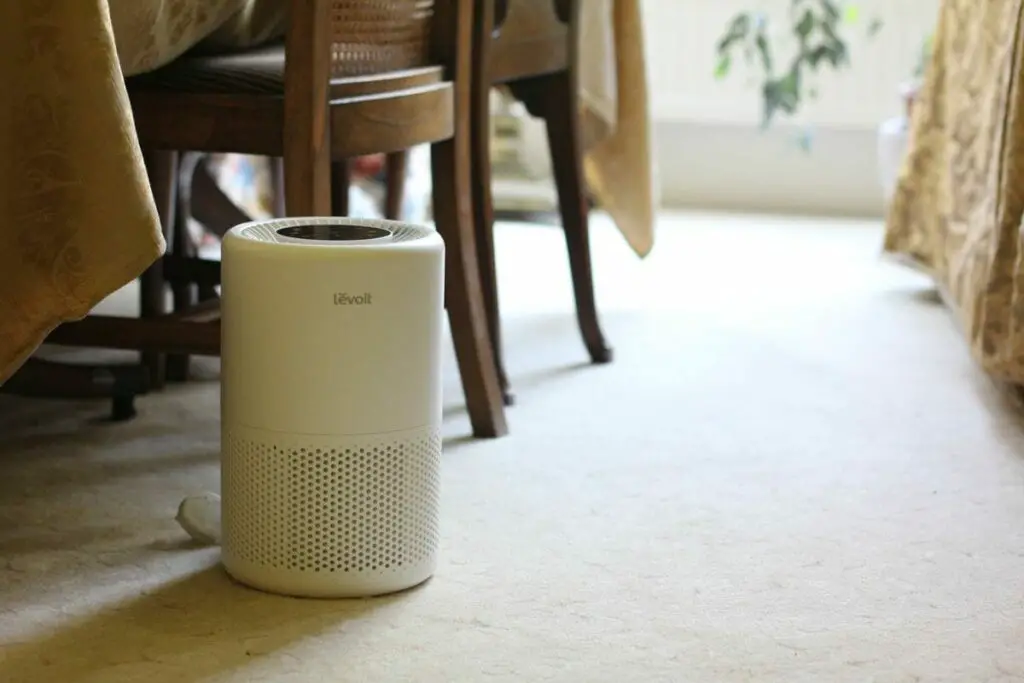
Specifications
| Filters | |
| HEPA filter | HEPA 13 filter |
| Carbon filter amount of carbon | Small amount of carbon incorporated into main filter 0.1 lb |
| Filter Change HEPA (Particles) | 7 months |
| Filter Change Carbon (Chemicals) | 7 months |
| Airflow | |
| CADR at =<50db (CADR on Maximum) | 118 cfm (118 cfm) |
| Maximum Room Size (Noise less than 50db*) | 183 sq ft |
| Maximum Room Size (On noisiest setting) | 183 sq ft |
| Smart Control | Smart Phone App/Alexa/Google Home |
| Power | 37 W |
| Weight | 6.6 lb |
| Dimensions “H x “W x D” | 12.6 x 8.1 x 8.1inches |
| Annual Running Cost Electricity | $24 |
| Annual Running Cost Filters | $45 |
| Total Annual Running Cost | $70 |
All the above are approximate and assume running the air purifier for 12 hours per day on the highest setting that keeps the noise below the level specified in db in the table. This is less than or equal to 50db in normal daytime use and 35db for bedrooms.
*Most people will not wish to have the air purifier on a setting louder than about 35db for sleeping in a bedroom-you may wish to have a quieter setting than 35db this is just a ballpark estimate for most people. On the other hand, if your room layout allows you to be much further than 6 feet from the air purifier you may find the noise this machine makes at top speed is alright. The calculations for room size assume that you have 8 foot ceilings and 5 air changes per hour.
Never run an air purifier on auto mode using the inbuilt sensor. These cannot detect ultrafine particles which are damaging to human health, please see this article- How to test the air quality in your home.
GermGuardian AC4100
There are even mini air purifiers such as the GermGuardian AC4100 but these have a low CADR rating and will not cope with rooms larger than 75 sq ft.
Large Quiet Air Purifiers for a Small Room
As explained above can afford it and there is somewhere in the room that you fit a larger air purifier, this is probably the way to go.
Coway 400S
This air purifier has an extremely highly specified HEPA filter which deals with ultrafine particles. It is so quiet that it will even purify the air in a room of 300 sq ft at a noise level of 28db, which would feel about half as loud as my maximum sound level for sleep, so this is a very quiet purifier! This would also make the Coway 400S the ideal bedroom air purifier.
It also has massive capability on its higher fan speed settings, for air purification in emergencies such as wildfires.
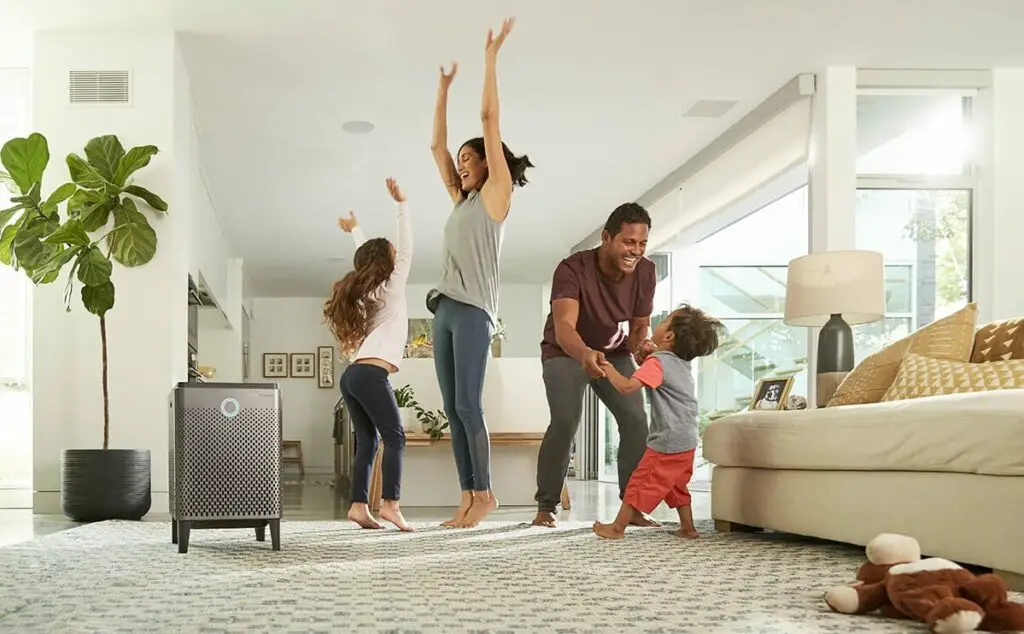
Specifications
| Filters | |
| HEPA filter | HEPA specified to remove 99.8% of ultrafine particles down to a size of 0.01um |
| Carbon filter amount of carbon (lb) | 1.5 lb so more than most other air purifiers |
| Filter Change HEPA (Particles) | 12 months |
| Filter Change Carbon (Chemicals) | 12 months |
| Airflow | |
| CADR at less than 35db noise | 198 cfm |
| Maximum Room Size (Noise less than 35db*) | 305 sq ft |
| Maximum Room Size (On noisiest setting) | 640 sq ft |
| Smart Control | Yes phone app/Alexa:/Google Home |
| Power | 66 W |
| Weight | 24.7 lbs |
| Dimensions “H x “W x D” | 22.8 x 14.8 x 14.8 |
| Annual Running Cost Electricity ($) | $40 |
| Annual Running Cost Filters ($) | $120 |
| Total Annual Running Cost ($) | $160 |
Its appearance is generally pleasing, and it comes in black and white. The holes in the grill add some black to the white and soften it. The top is black and as the air purifier is not very tall you will be looking down on a black square in your room.
I sometimes think that there should also be a midrange color option, ideally a light grey like the iQair HealthPro Plus or a matt metallic slightly reflective coating which can reflect other colours in the room. In this way the air purifier would blend in with your decor, not stick out. Both white and black add contrast in a room of intermediate colors, and so the eye is naturally drawn to the air purifier.
Winix AM 90
This is the replacement for the Winix 5500 air cleaner and has the advantage of smart Wi-Fi control. For sleeping, this air purifier can be only be recommended for bedrooms up to 145 sq ft as the noise level to serve a room of this size is 36db.
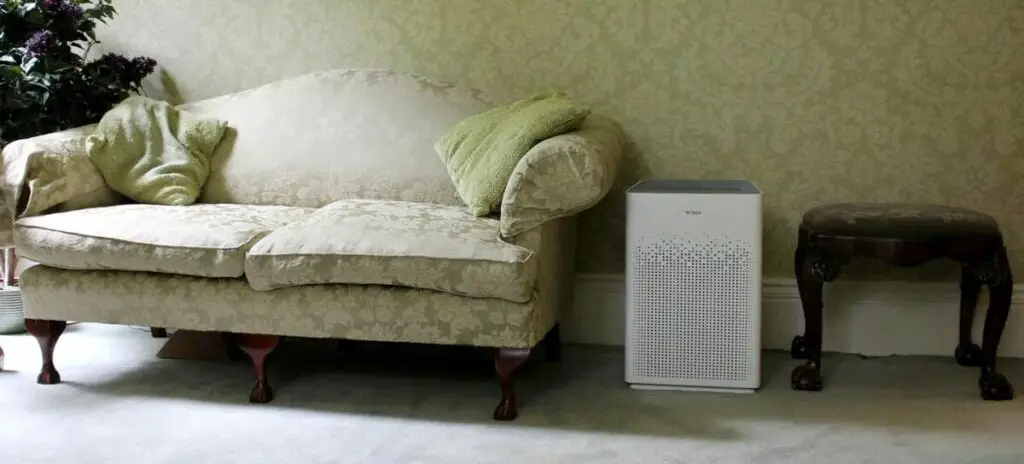
| Filters | |
| HEPA filter | HEPA 13 filter |
| Carbon filter amount of carbon | Small amount of carbon incorporated into main filter 0.1 lb |
| Filter Change HEPA (Particles) | 12 months |
| Filter Change Carbon (Chemicals) | 3 months |
| Airflow | |
| CADR at 36db | 94 cfm |
| Maximum Bedroom Size* | 145 sq ft |
| Maximum Room Size (On noisiest setting) | 360 sq ft |
| Smart Control | Smart Phone App |
| Power | 65 W |
| Weight | 15.8 lb |
| Dimensions “H x “W x D” | 23.5 x 8.7 x 15.1 inches |
| Annual Running Cost Electricity | $20 |
| Annual Running Cost Filters | $80 |
| Total Annual Running Cost | $100 |
This is the replacement for the Winix 5500 air cleaner and has the advantage of smart Wi-Fi control. For sleeping, this air purifier can be only be recommended for bedrooms up to 145 sq ft as the noise level to serve a room of this size is 36db.
What is the Best Air Purifier for a Small Bedroom?
On the whole the best air purifier for a small bedroom is the Coway 400S. It is 4 times quieter than a typical small air purifier and so provided that you have the space it would be by far your best choice.
As explained above the paradox is that the smaller the room quieter the air purifier needs to be as the closer you are to it.
How to Use your Small Room Air Purifier
In one review of studies where air purifiers were used, fine particulate matter was reduced between 23-92%. Bear in mind the EPA recommends a minimum reduction of 80%. So even in experimental studies with training in how to use the air purifiers, most air purifier users failed to hit this target. On the other hand, it shows that air purifiers, when used well, can decrease particle count by 90%. This just emphasizes the importance of how you use the air purifier.
- Buying an air purifier-the air purifier should have a true HEPA filter, adequate air flow (CADR) at a noise that you can tolerate for long periods. The air purifier should be “smart” that is programmable or capable of being made smart. The most difficult part is buying one with an adequate air flow at a noise that you can tolerate for long periods as most air purifiers are too loud on their maximum fan speed and manufacturers usually do not give data on air flow and noise at lower fan speeds. There is helpful advice about buying an air purifier here-“Buying an air purifier”. Alternatively, just buy the recommendations on this site. If you want the quietest air purifier you may wish to read this article-“Best Quiet Air Purifiers“, if you need one that will remove particles very well but is particularly good at removing chemicals from the air, for example from forest fires, please see this article-“Best Air Purifier for Smoke“.
- Position the air purifier at least 12 inches from any wall-so that the air coming out of the air purifier joins in with the circulation of air in the room. There is advice about using an air purifier in this article-“How to Use an Air Purifier“.
- Run the air purifier for at least 30 minutes before entering the room. This is because it takes an air purifier this long to reduce the particle count in the room. So the air purifier that you buy needs to be smart or capable of being made smart by plugging it into a smart plug.
- Run the air purifier continuously when you are in the room at the highest setting that you can tolerate long term. This is because the higher the setting that you run the air purifier on the lower the particle count in the air will be. There is no lower threshold known below which human health does not improve, so the lower the particle count/PM2.5 the better. Health aspects of particle count/PM2.5 are outlined in this article-“Airborne Particles and Chemicals Affect Us All Now“.
- Never run the air purifier using its inbuilt sensor-there are 7 reasons that you should not do this as outlined in this article-“How to Use an Air Purifier“.
- Always test the air with an air quality meter where you are going to sit at the height in the room where your mouth and nose are. Comparing the measurements before and 45 minutes after switching the air purifier on there should be at least an 80% reduction in particle count as the EPA recommends. Testing that the particle count/PM2.5 is adequately reduced by your air purifier is the most important thing that you need to do. Air quality meters can be brought really quite cheaply eg $35, there is a helpful article about them here-“How to Test Air Quality in Your Home“.
- How many air purifiers do I need?-at least 2 but maybe 5 or more. Please see this article “How many air purifiers“.
Conclusion
The best small room air purifier provided you can afford it and have the space, is a large air purifier on a low-flow setting. The low-flow setting has to be adequate for the size of the room but will be much quieter than a small air purifier on a high flow setting.
So the best pick is the Coway 400S.
If you cannot afford the QA 400S or there is not room to put it in the small room, then I would recommend the Winix AM90 or Levoit 200S.
Related Questions
Related Articles
Water Air Purifier-3 Scientific tests may surprise you
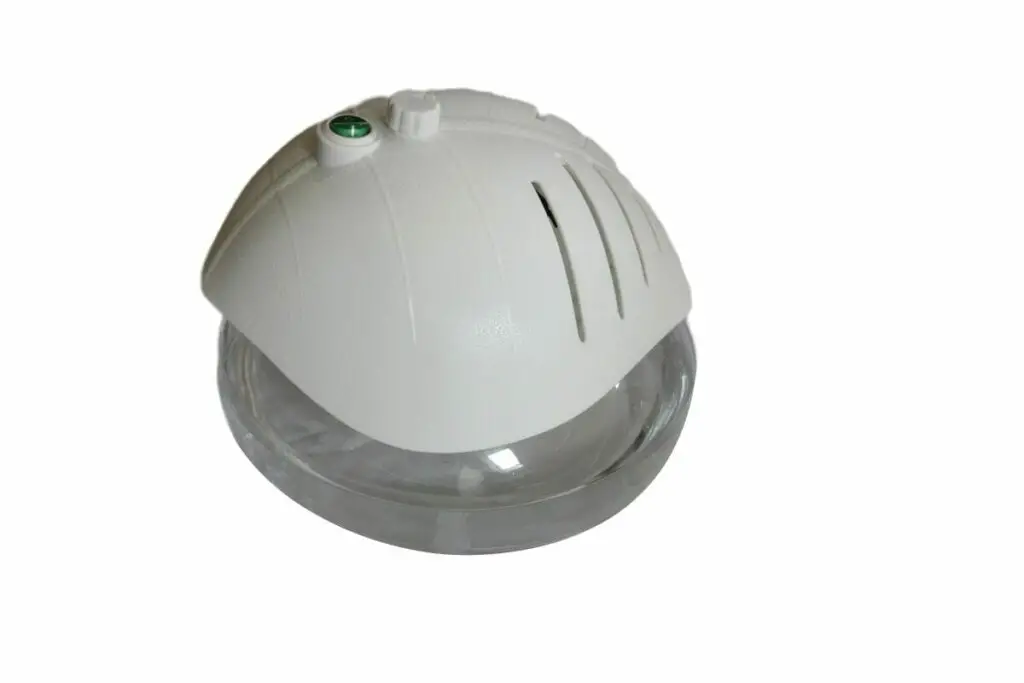
Best Air Purifier for a Baby


